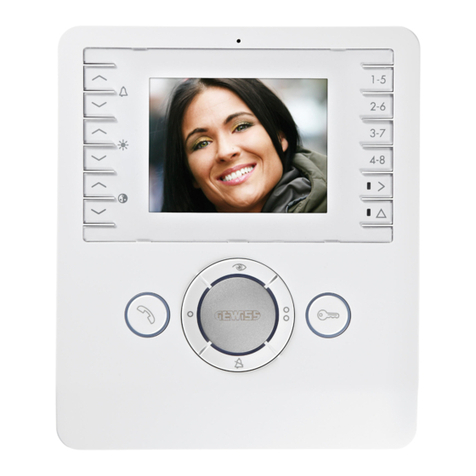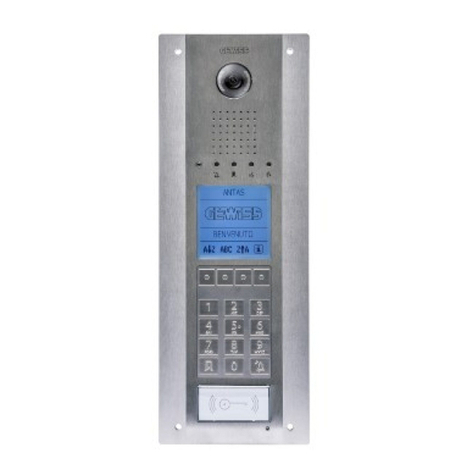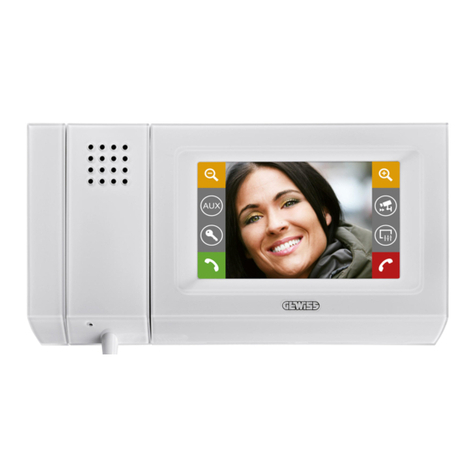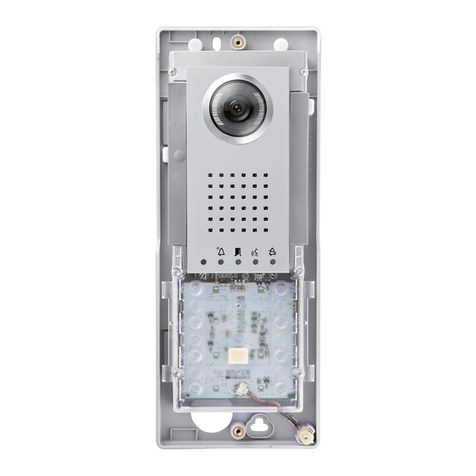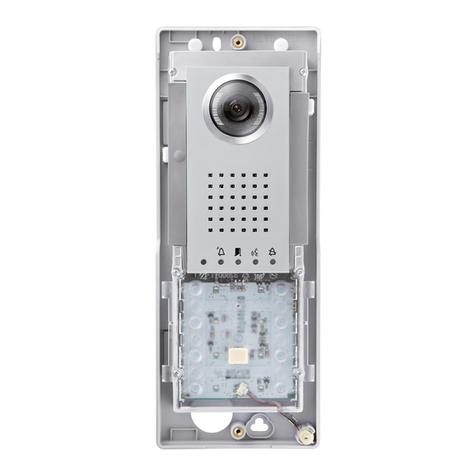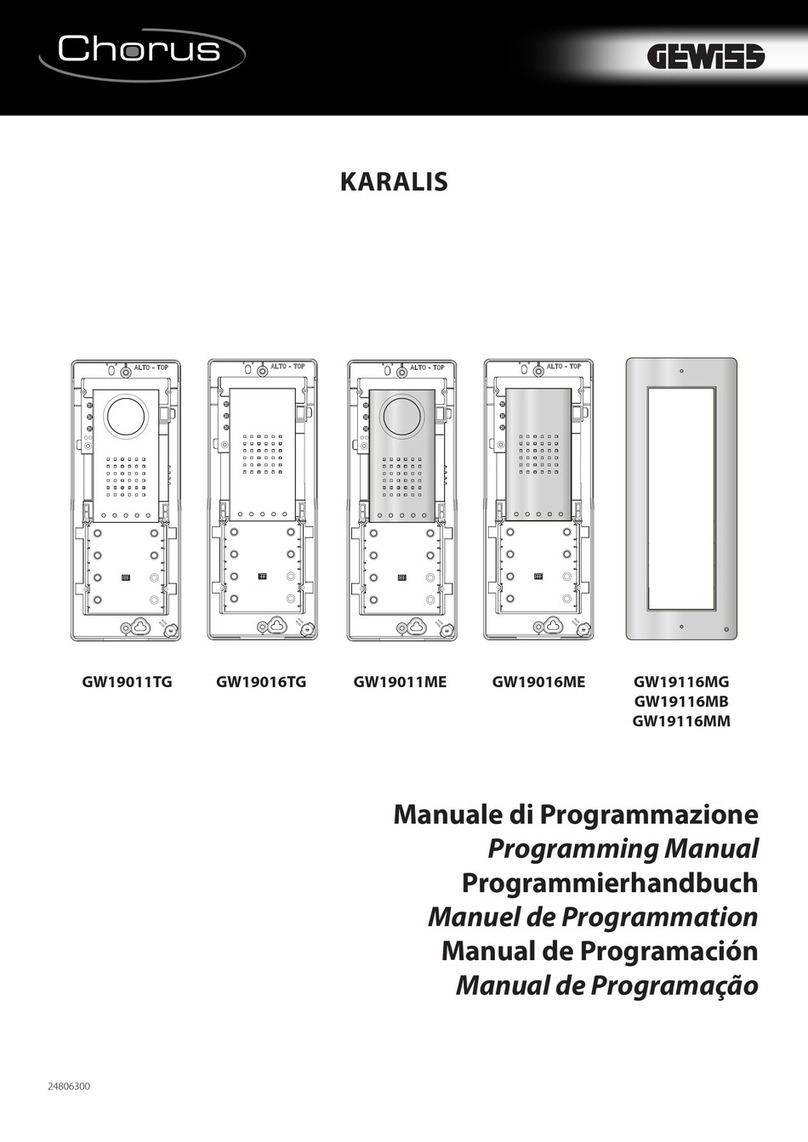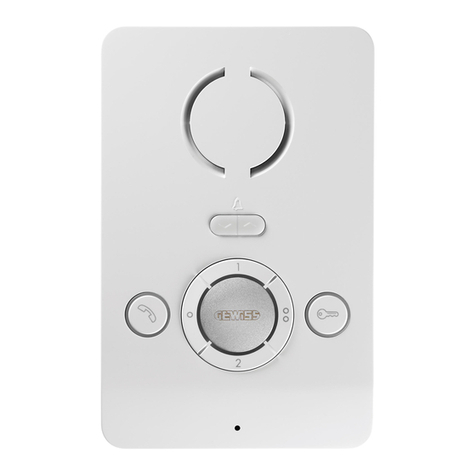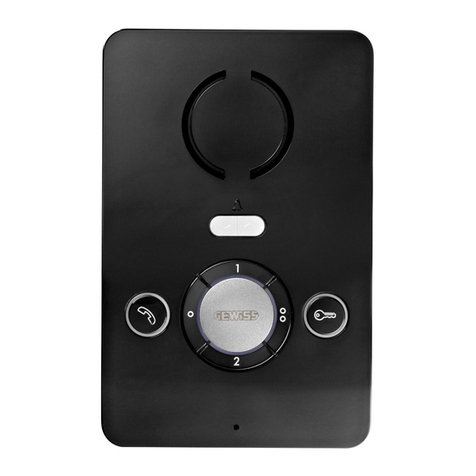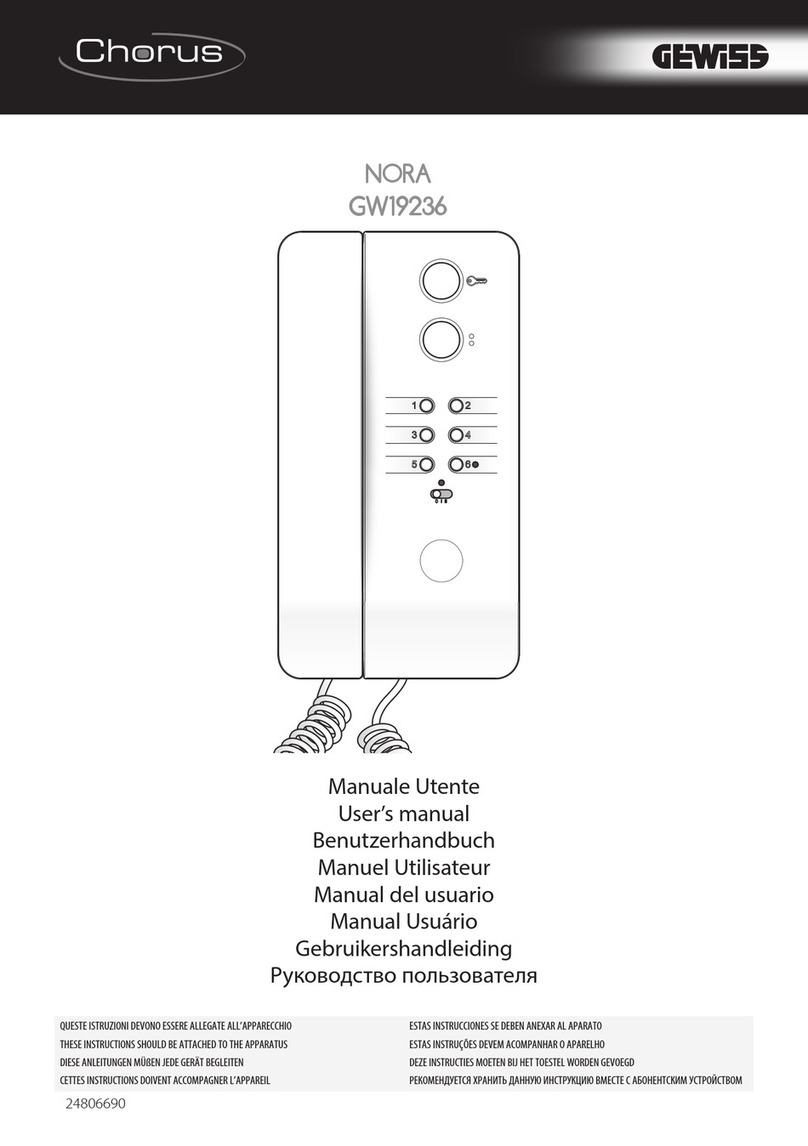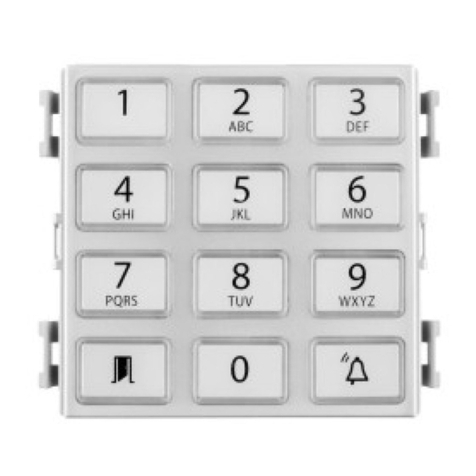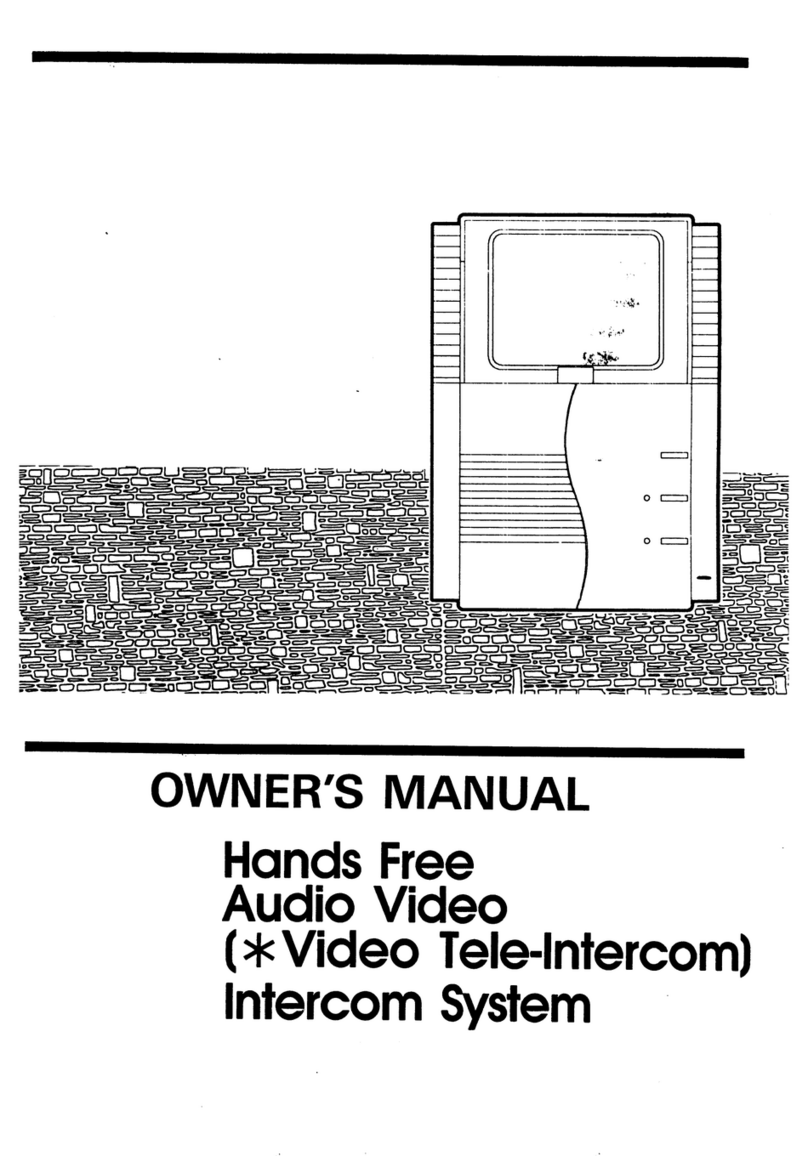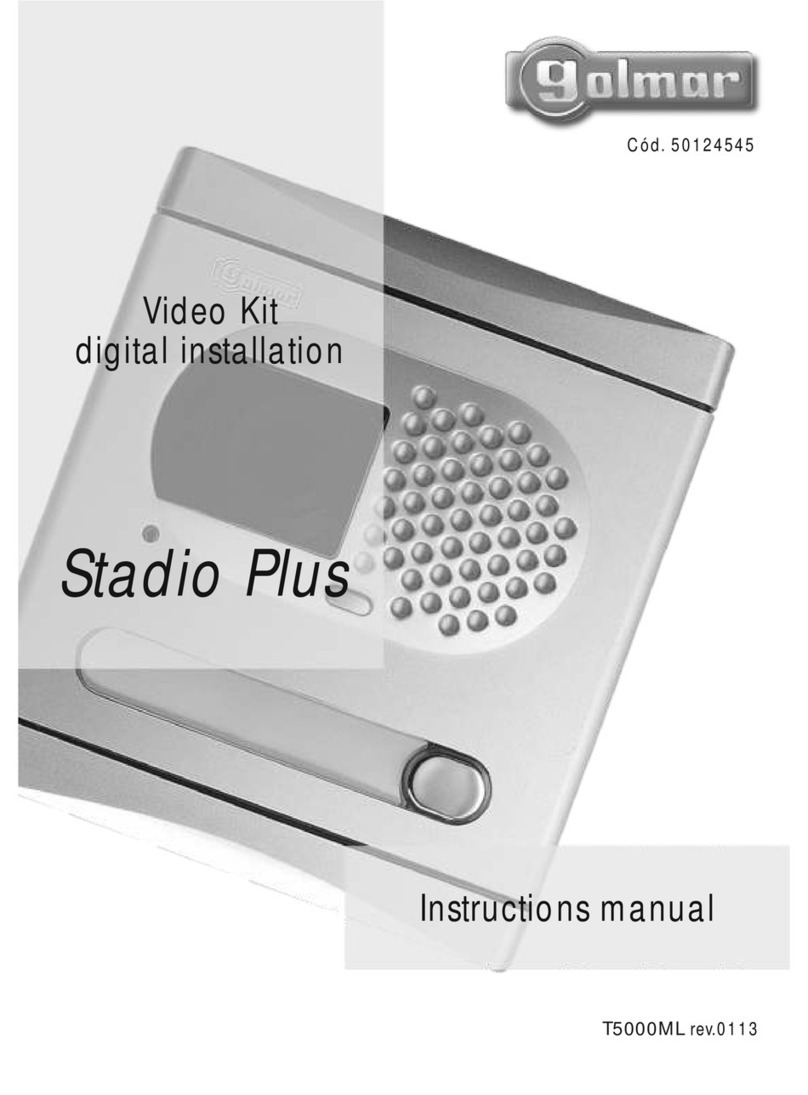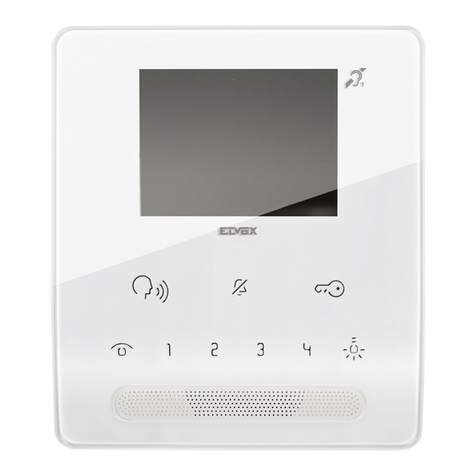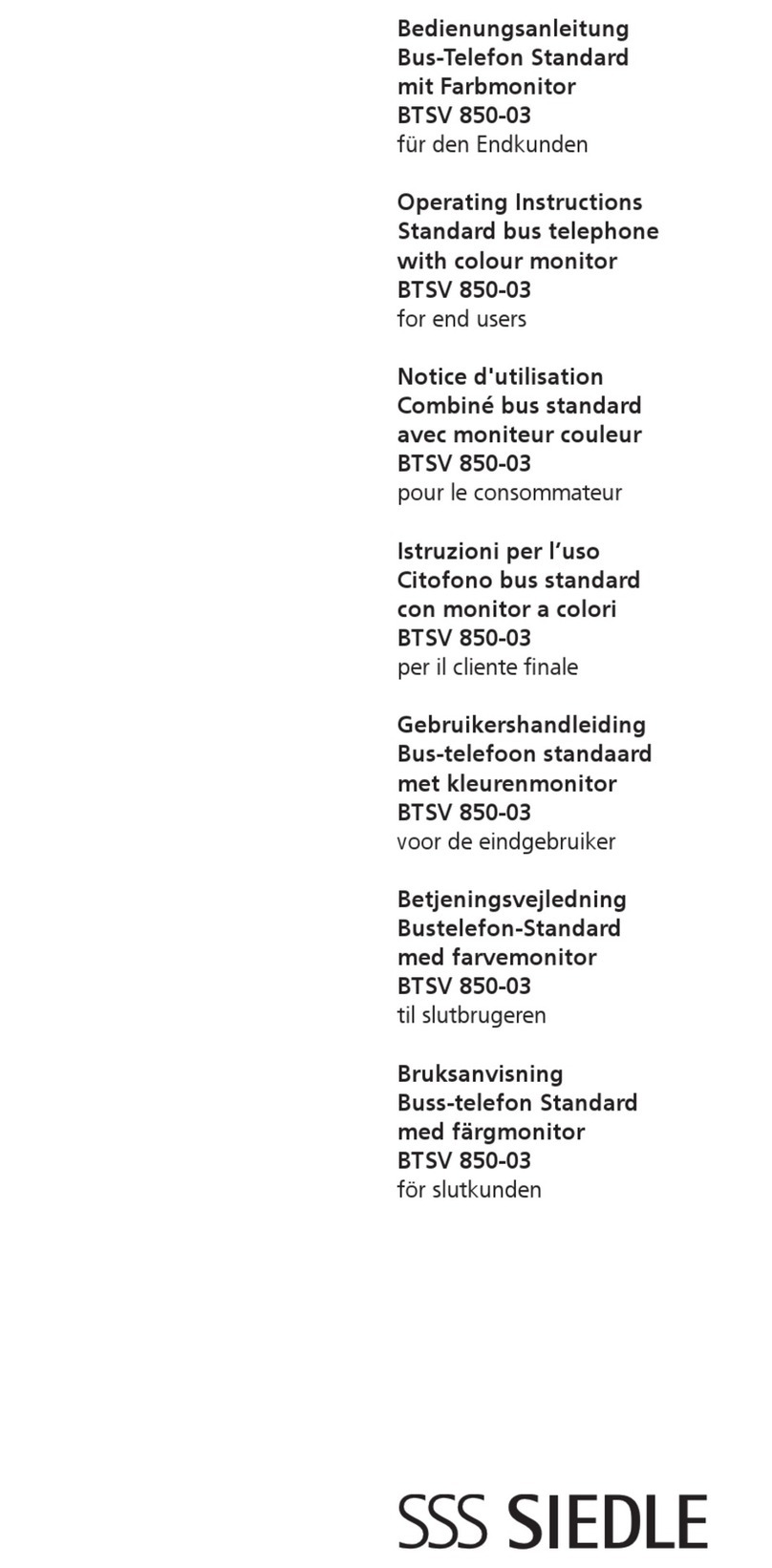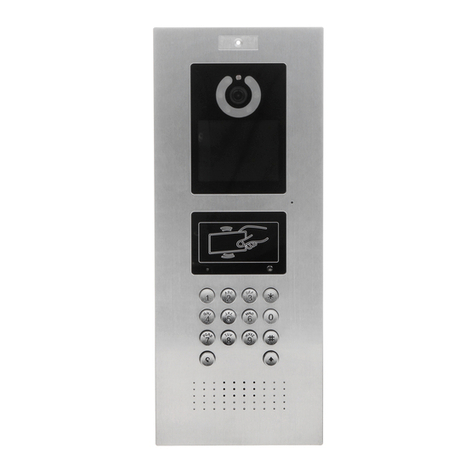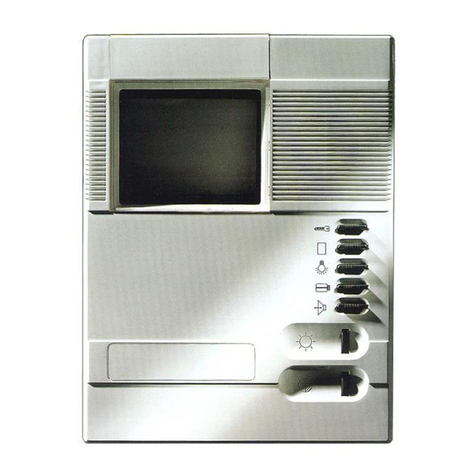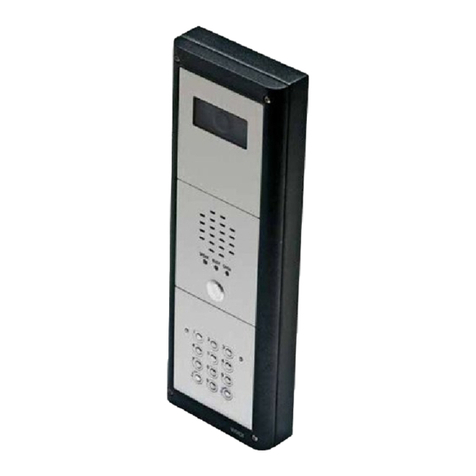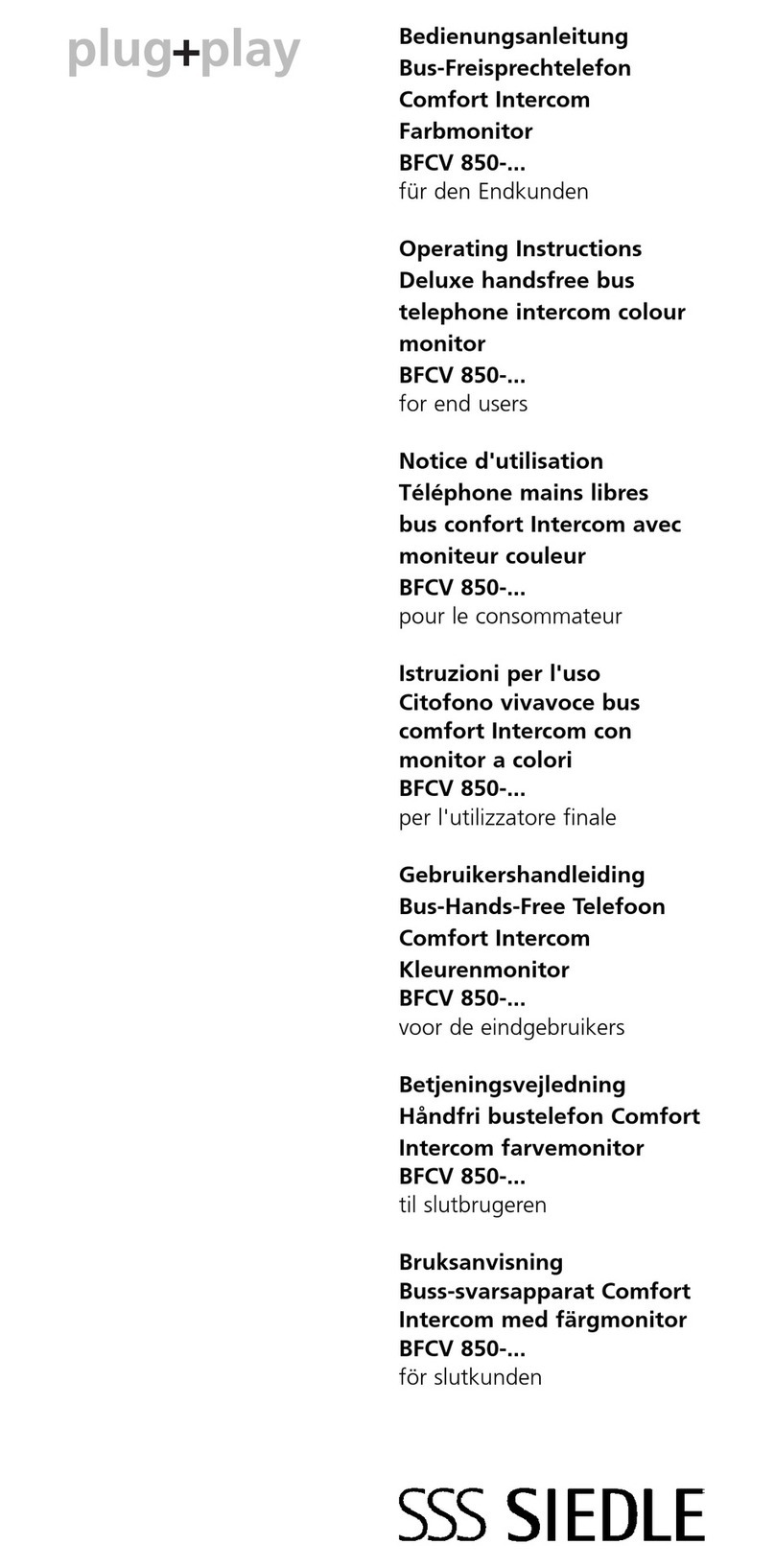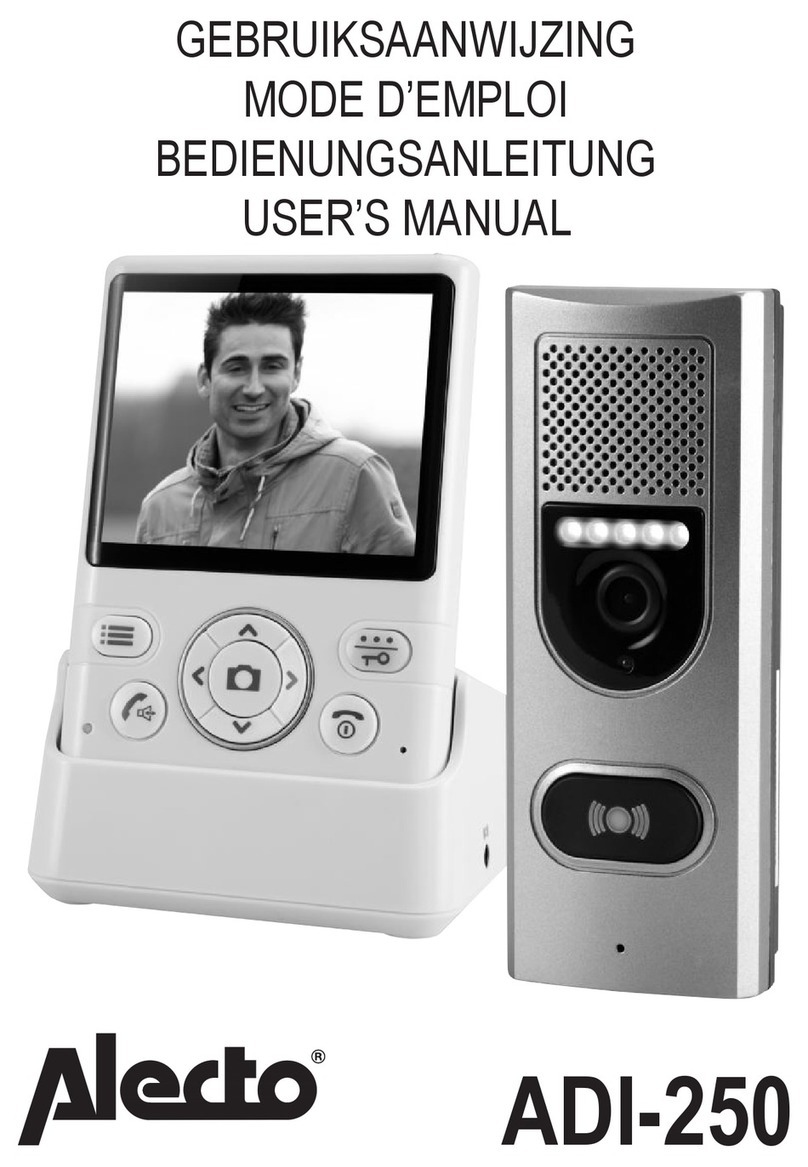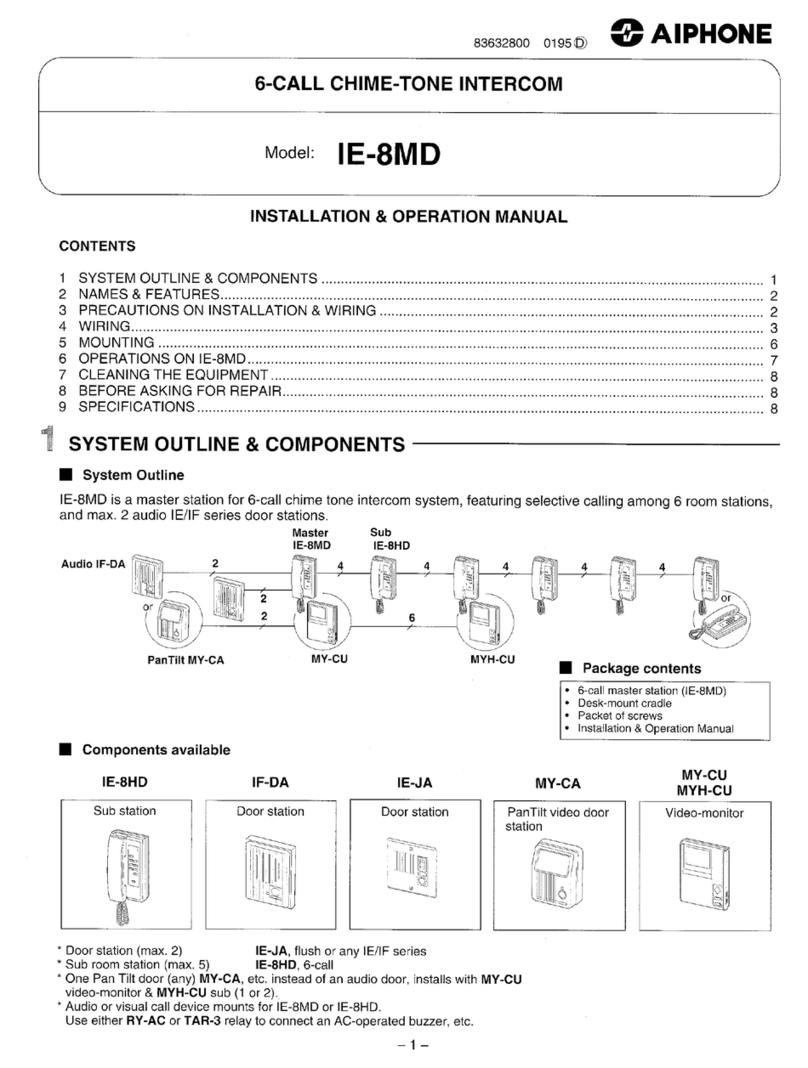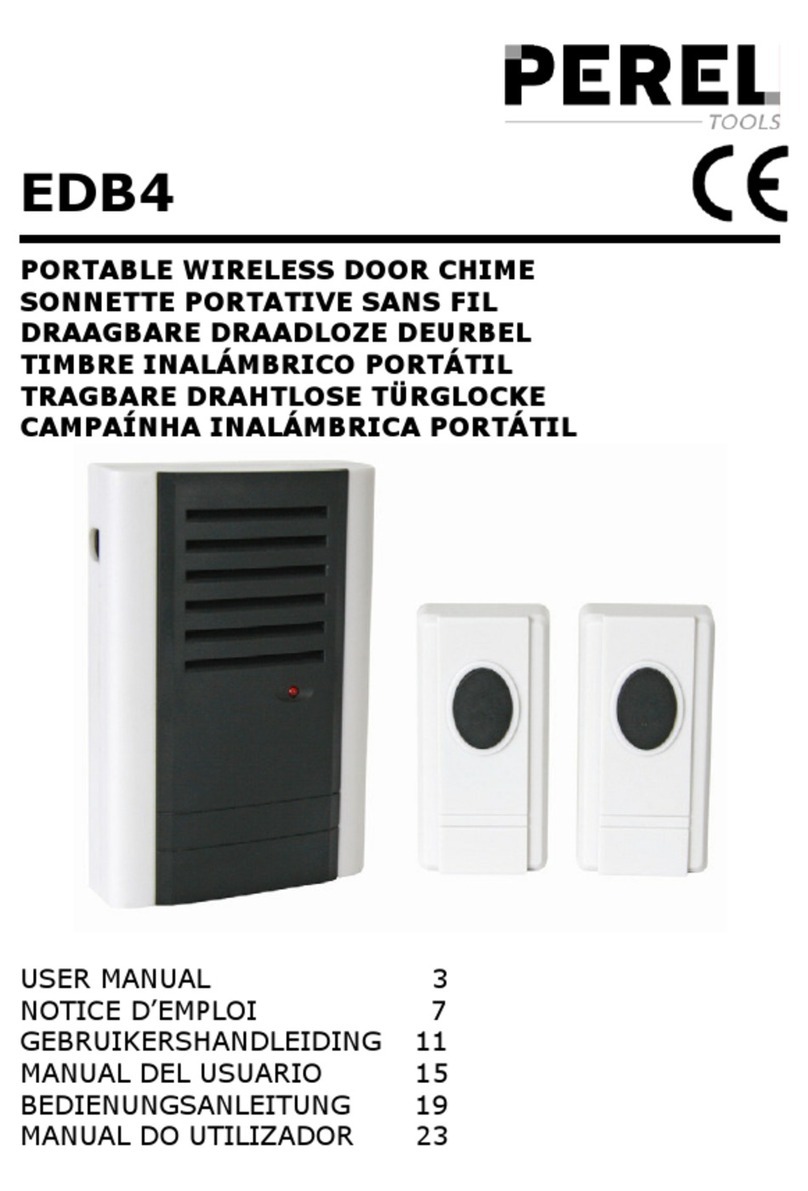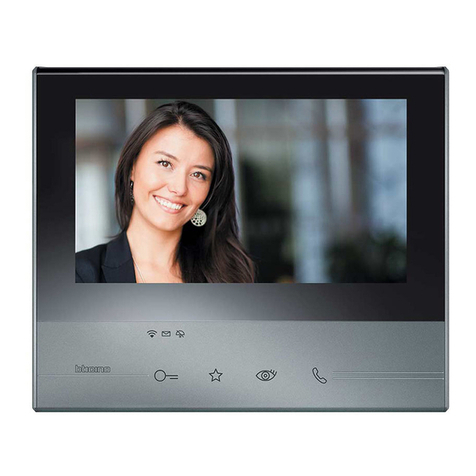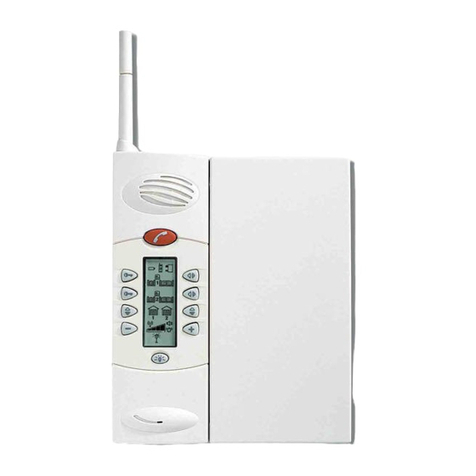Chorus Digital Vision - Technical System Manual 5
Digital Vision is the video entryphone system on IP technology integrated - from a design and practical viewpoint - with the Chorus
devices (domestic range for electric and Home Automation systems). The video entryphone devices are connected to each other via a LAN
network that also provides the necessary power supply (PoL – Power over LAN). This means you can create a wide range of systems,
from the detached home to the medium-sized block of flats.
The range of system devices covers all needs, from simple vocal communication to colour video entryphones, from intercom communica-
tions to video control and integration with KNX domotic systems. The apartment units can be made up of different combinations of video
entryphones, entryphones with speakerphone, and wall-mounting entryphones.
The system is programmed via a PC equipped with the special software, allowing you to configure the entire video entryphone system quic-
kly and easily. Alternatively, for small/medium systems there is also a simplified procedure that does not require the use of a computer.
Call: this allows a call to be made from the front door unit to the apartments linked with that position. If there is a video function, this
is immediately activated along with the call, while the choice of whether to enable the 2-way audio communication is left to the person
called. If the apartment already has a communication in progress, or has activated the Privacy function, the front door unit will indicate the
"busy" status. The person calling may also record a video message after the call, if the Video mail function is enabled.
Privacy: the system can manage several calls and communications simultaneously, yet keeping them entirely separate.
Multiple apartment units: in each apartment, more than one apartment unit can be installed, using the combination of devices you
require.
Primary and secondary front door units: this distinction allows you to subdivide the front door units in a logical manner (for example a
street entrance position and a building entrance position), and also to use different ringers to identify where the call is coming from. The
electro-lock of the primary position can also be activated without any incoming call.
Intercom: direct communications can be made between the apartment units of a single apartment, and (if configured) between the
apartment units of different apartments. The intercom function between different apartments is only possible with audio/video apartment
units (GW 18 341xx, GW 18 343xx, GW 18 000xx).
Video surveillance: on the video entryphone, it is possible to see the images filmed by the telecameras of the front door units, even
without any incoming call in progress, or those filmed by other telecameras connected to the video entryphone system via the camera
interface (GW 18 376).
Identifying the calls: different tones can be used to distinguish the type of call, for example from a front door unit, from the landing, or intercom.
Adjustable volumes: the volume of the communications and buzzers can be adjusted.
Electro-lock: different types of electro-lock can be activated, connecting them directly to the front door units or using the relay unit (GW
18 381). The electro-locks can only be activated from the apartment units in response to a call, or in "free" mode (without an incoming
call). In the case of a call, the system recognises which front door unit it is coming from and activates the relative electro-lock.
"Door open" alarm: some electro-lock models are equipped with a sensor that detects when the door is open, and this information can
be used to inform the video entryphones that the entrance door is not closed.
Auxiliary implementations: thanks to the relays of the apartment units/front door units and relay units, it is possible to command other
systems of the building, such as lights on stairs or access pathways.
Local push-buttons: external push-buttons can be connected to the apartment units/front door units and relay units, to create functions
such as the landing call or door opener.
Internal number busy: the system indicates to the person calling if the internal number is already busy with another communication.
Privacy: by activating this apartment unit function, any incoming call will automatically obtain the "busy" signal and the occupant will not
THE SYSTEM
`General description
Functions available
`
